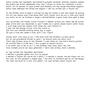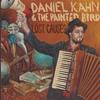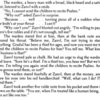2: Lyrics, “Avreml the Filcher,” 2010; Youtube recording, Daniel Kahn & the Painted Bird, 2018; and excerpt, "Romance of a Horse Thief," 1986.
Mordechai Gebirtig (1877–1942) was a Jewish poet and songwriter from Krakow, Poland. He was known (and beloved) for compositions in a folk style that depicted the lives of working class Jews. In his song “Avreml der marvikher” (Avreml the Filcher, sometimes translated as Avreml the Pickpocket), Gebirtig depicts the life of a different type of Jewish criminal than the ones we get to know in Romance of a Horse Thief. His songs remain popular with Yiddish singers, including Berlin-based American-born artist Daniel Kahn, whose bilingual version of "Avreml" is included in this resource.
Suggested Activity: Break students into pairs and ask them to read Kahn’s English lyrics (note that he has only translated the third, fourth, and fifth stanzas, and has left the first, second, and sixth stanza in the original Yiddish). You may also choose to read the lyrics out loud as a class, especially if the instructor and/or students are comfortable pronouncing transliterated Yiddish. Discuss: How is Avreml’s life depicted? How sympathetic or unsympathetic is he? What class issues come up in the song? What fate does Avreml imagine for himself? If students have some familiarity with Yiddish, you might also ask them to compare the English and Yiddish verses. Even if they do not know Yiddish, you can ask them to reflect on their experience reading (or later listening to) verses in Yiddish. Have students predict how the song might sound. What genre do they think the song will be? What tempo? What instrumentation?
Next, play a recording of the song being performed by Daniel Kahn & the Painted Bird. What styles of music do you notice? (You may choose to stop the video at 0:47 to ask the questions before the musical style changes, and then repeat the questions again at the end of the song.) What is the emotional impact of these styles of music? Kahn keeps some of the song in the original Yiddish and translates some verses into English. What effect does this choice have on the piece as a whole? Why might an artist choose to make a bilingual piece?
At the end of “Avreml the Filcher,” Kahn includes a version of the kaddish, the Jewish mourning prayer. If students are familiar with the kaddish, you may choose to ask them why they think Kahn chose to end his version of the song with this memorial prayer. Now have students read the excerpt from chapter 20 of Romance of a Horse Thief. Why does the warden refuse to send children to pray for Gradul? How does this contrast with Kahn’s use of kaddish to mourn Avreml? Zanvl says to the warden, “Sure he’s a thief. I’m a thief too, you hear me? But we’re Jews.” What do his words say about how Jews are supposed to behave?
Sources: Mordechai Gebirtig, “Avreml der marvikher/ Avreml the Filcher,” lyrics, trans. Daniel Kahn, 2010, accessed online.
Mordechai Gebirtig and Daniel Kahn, “Avreml the Filcher / Avreml der Marvikher,” in Lost Causes (Berlin: Oriente Musik, 2010), accessed on Youtube.
Joseph Opatoshu, Romance of a Horse Thief, trans. David G. Roskies, in A Shtetl and Other Yiddish Novellas, ed. Ruth R. Wisse (Detroit: Wayne State University Press, 1986), 202.
Avreml lyrics
 Download image (631.71 KB)
Download image (631.71 KB) Avreml the Filcher
 Download video (0 bytes)
Download video (0 bytes)



